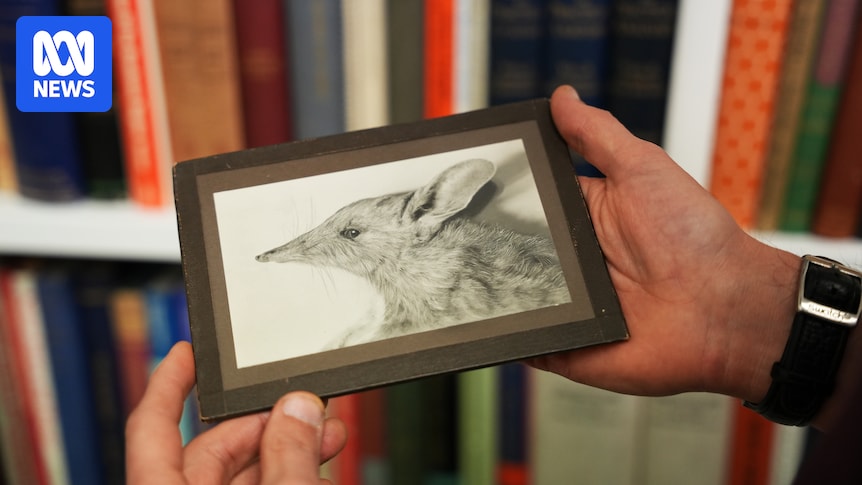
In a remarkable discovery, Rohan Long, curator of the University of Melbourne’s Harry Brookes Allen Museum of Anatomy and Pathology, unearthed a series of century-old photographs that have reignited interest in a long-extinct species. While sifting through archives of an anatomy professor, Long stumbled upon black and white images of landscapes and native mammals, including the elusive butterfly bandicoot.
The photographs, taken by anatomist and naturalist Frederic Wood Jones in the 1920s, depicted two bandicoots: a side profile of an adult and a heavily painted-over image of a juvenile. These images, initially perplexing due to their outdated scientific nomenclature, were sent to Kenny Travouillon, a mammalogy curator at the Western Australian Museum. Travouillon identified them as the extinct Nullarbor barred or butterfly bandicoot (Perameles papillon), a species he described in 2018.
Historical Context and Significance
The butterfly bandicoot, named for its distinctive rump markings, was once a resident of the Nullarbor region. The photos not only captured its unique ear markings and barred fur pattern but also linked the species to “Ooldea,” a location in the Nullarbor. This connection adds a geographical context to the species’ history, highlighting its once thriving existence in the area.
Frederic Wood Jones, who taught at the University of Adelaide in 1919, was deeply concerned about the rapid decline of Australian mammals. His works, including The Mammals of South Australia, documented the anatomy and ecology of these creatures. Despite his efforts to breed bandicoots, European colonization and the introduction of predators like foxes led to their extinction.
The Fate of the Butterfly Bandicoot
Jones’ writings reveal the challenges faced in preserving the species. Live specimens collected by traditional owners were sent to Adelaide, but many did not survive the journey. The surviving bandicoots exhibited aggressive behavior, with females often killing their mates and offspring. This aggression, coupled with environmental pressures, contributed to their decline.
By the 1930s, the butterfly bandicoot was extinct, a victim of habitat loss and predation. However, its aggressive nature and unique escape behavior, which involved leaping into the air, may have allowed it to survive longer than other small mammals.
Lessons from Extinction
The rediscovery of these photographs underscores the importance of museum collections in understanding extinct species. According to Dr. Travouillon, examining such specimens can aid in conservation efforts for still-living relatives. The butterfly bandicoot’s genetic lineage, which diverged 3 million years ago, offers insights into potential rewilding strategies.
“Once they’re gone … there’s no more holes where plant seeds can accumulate, and the seeds actually need that to germinate,” Dr. Travouillon explained, emphasizing the ecological role of bandicoots in seed dispersal.
Reintroducing related species to former habitats could help restore ecological balance, as digging mammals like bandicoots play a crucial role in the environment.
A Reminder of Responsibility
The rediscovered images serve as a poignant reminder of the consequences of human actions. Rohan Long hopes these photographs will inspire reflection on the importance of preserving biodiversity. He echoes sentiments from Professor Jones’ writings, which urged Australia to take responsibility for its natural heritage.
“Australia has a heritage for which it must accept responsibility. It must be prepared to conserve the living, to collect and preserve the dead, and to make provision for the proper study of the fauna in all its aspects,” Professor Jones once wrote.
As we look to the future, these images of the butterfly bandicoot remind us of the delicate balance between human progress and environmental stewardship. They challenge us to learn from the past and take action to protect the species that still share our world.







